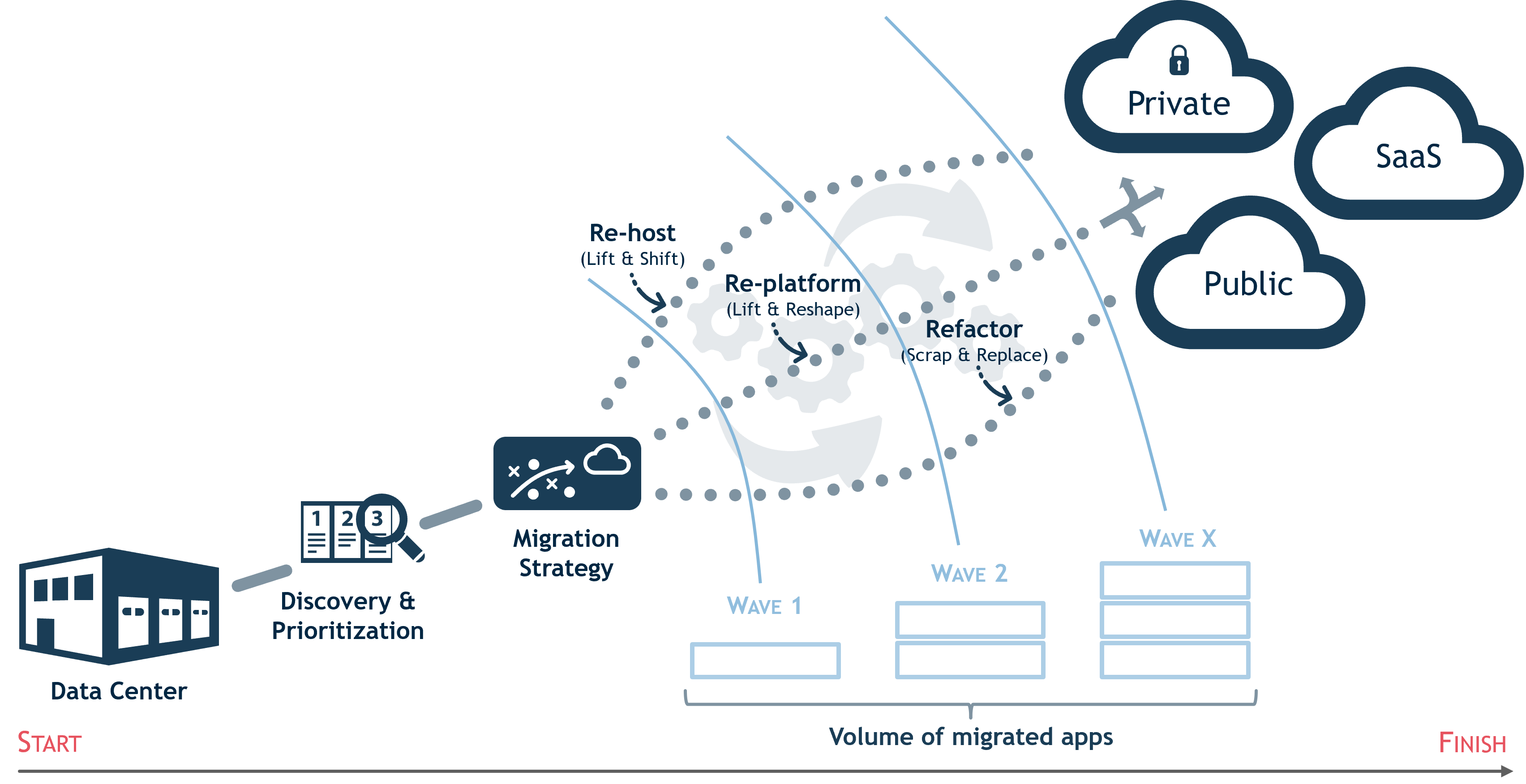Cloud Migration
Migration to the cloud
An unbroken trend
The ambition to move into the cloud is omnipresent. More and more companies are looking at moving their IT from physical data centers into the cloud. According to joint research conducted by Navisco and Whitelane Research, companies are assuming that at least 50% of new applications will be cloud based. This trend is being further accelerated by the current COVID19 Pandemic, due to a rapid increase in remote working and virtual conferencing. 57% 1) of clients believe that the use of public cloud infrastructure will accelerate as a result of COVID19.
1) Whitelane Research in collaboration with Navisco AG (2021), German IT Sourcing Study.
Complex endeavour
Challenges and pitfalls
It is important to remember that there is no one-size-fits-all solution for cloud migration. When planning such a complex undertaking, it is therefore essential to develop a strategy with clearly defined business objectives. In formulating this strategy, there are a number of fundamental things that should be considered and ideally proactively addressed. Below are some of the most common pitfalls.
No. 1:
SQUARE PEG,
ROUND HOLE
No. 2:
LACK OF
CONTROL
No. 3:
MISSING BUY-IN
FROM THE BUSINESS
No. 4:
UNCLEAR DEPENDENCIES
No. 5:
LACK OF
INTERNAL EXPERTISE
Not every app is fit for the cloud. A cloud readiness assessment will help determine what the best solution is and what elements to keep and what to scrap.
How will the application landscape be managed post migration and by whom will it be managed? Strict rules need to be in place to avoid loss of control.
An IT-led initiative, without the necessary support from the business will prove to be challenging. Getting key stakeholder from across the business on board is essential for the cloud migration strategy to become a success.
Applications often pull data/information from external sources, or indeed act as a data source. Understanding these interdependencies is vital.
Often staff are not trained to effectively manage cloud environments. Necessary skills and knowledge need to be in place or built to support the transition to a cloud-based infrastructure.
Our approach
A TAILORED CLOUD MIGRATION STRATEGY
The Cloud forms part of every digital transformation initiative. It is vital however, that your Cloud Migration Strategy is tailored to your business needs. There is no such thing as a one-size-fits-all approach. The right solution for your company, or indeed your application landscape, depends on a number of parameters:
Cloud Migration Approaches
Three approaches to choose from
Re-hosting
In this case the application is essentially moved from one location to another without any (or only marginal) configuration work necessary.
Re-platforming
Whilst the application architecture also stays virtually untouched in this process, some re-configuration and optimizations will be required to allow the application to run efficiently in the new cloud environment.
Re-factoring
In some instances, it may be necessary (or beneficial) to start afresh. The application will then be fundamentally redesigned or re-architected right down to its very core.

SaaS Solutions
The 4th approach
During this process, it will also be worth taking a look at available SaaS solutions. Their main benefit is that they are hosted and maintained by the software vendors themselves and get updated on a regular basis. Furthermore, as they are generally ready for use, the time to benefit is comparatively short. The standard commercial model in this case is based on a subscription, giving you the option to easily scale your user base up and down in line with your requirements.
Navisco AG
THE RIGHT PARTNER FOR YOUR CLOUD MIGRATION STRATEGY
A cloud migration strategy should always be based on achieving maximum business value. Using our tried and tested tools and methodologies, we can support you with the following:


